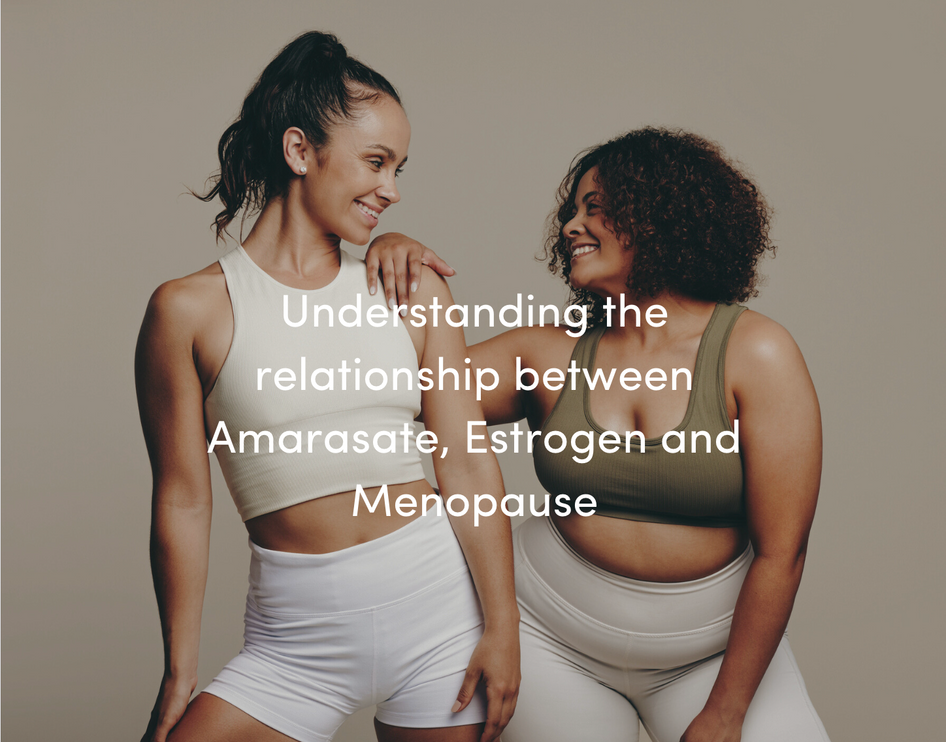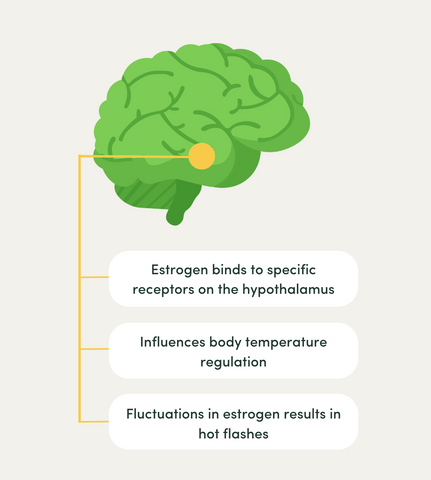Understanding the relationship between Amarasate, Estrogen and Menopause

Have you ever wondered if Amarasate hops extract can affect your estrogen levels?
The hallmark of menopause is fluctuations in the female hormone - oestrogen. This results in menopausal symptoms, such as hot flushes, night sweats, sleep disturbances, and fatigue, affecting about 50% to 80% of middle-aged women. Some women have to deal with these symptoms for as long as 10 to 15 years. Alternative options (e.g phytoestrogens) to medical therapies in the form of dietary supplementation can provide some relief from these symptoms.
Phytoestrogens are plant-based compounds that mimic the action of oestrogen. The main sources of phytoestrogens are soy, red clover flaxseed and hops. Hops contain one of the most potent phytoestrogens known to date: 8-prenylnaringenin (8-PN). Due to the strong oestrogen-like effects, 8-PN is usually proposed as an alternative to hormonal replacement therapy (HRT).
Some research has indeed found that a daily dose of hops extract, primarily formulated with 8-PN can decrease hot flashes and increase the quality of life of menopausal women (Erkkola et al. 2010). The hypothalamus, the part of the brain that regulates body temperature has estrogen receptors and is affected by the fluctuations of this hormone during menopause, resulting in abnormal sudden increases in body temperature and associated (hot flushes).

Here is where the science gets tricky.
Whilst 8-PN is one of the most potent phytoestrogens, the receptor to which 8-PN binds to provide relief from menopausal symptoms is the same receptor which may be involved in some types of hormone receptor-positive breast cancers.
This is because whilst other plant phytoestrogens such as soy bind to oestrogen-receptor β found in fat tissue, brain and the kidneys, 8-PN binds to oestrogen-receptor-α (ERα), which is the main receptor present in the reproductive system (uterus and ovaries), bones and breast tissue.
Endogenous (made in the body) estrogens can be stimulators of the growth of estrogen-receptor positive tumours and also pose a hazard to patients who have ER-positive tumours and who are being treated with antiestrogens (Helle et al., 2014; Helle et al., 2016; Rimoldi et al., 2006). These findings suggest that consumption of phytoestrogens, especially 8-PN may not be appropriate for patients at increased risk of hormone-dependent cancers or survivors. Taken together, women who have had breast cancer, or who are at high risk for it, are advised to avoid hops that contain 8-PN without checking with their healthcare provider.
However…
Calocurb contains negligible (i.e no) traces of phytoestrogens, 8-PN or isoxanthohumol which can convert to 8-PN in the body. Supercritical CO2 extraction does not extract prenylflavonoids (8-pn, 6-n, xanthohumol or iso-xanthohumol) from hops. This process delivers a natural hops extract that contains optimal concentrations of αlpha acids and negligible traces of any other residual parts of hops. αlpha acid concentration provides Calocurb the clinical evidence of:
- Reducing caloric intake by an average of 18%
- Reducing changes in hunger by up to 100%
- Reducing changes in cravings by up to 120%...
- Without the possibility of interacting with estrogen receptors in the body
References
Bolca S, Li J, Nikolic D, Roche N, Blondeel P, Possemiers S, De Keukeleire D, Bracke M, Heyerick A, van Breemen RB, Depypere H. Disposition of hop prenylflavonoids in human breast tissue. Mol Nutr Food Res. 2010;54(Suppl. 2):S284–S294.
Keiler, A. M., Macejova, D., Dietz, B. M., Bolton, J. L., Pauli, G. F., Chen, S. N., van Breemen, R. B., Nikolic, D., Goerl, F., Muders, M. H., Zierau, O., & Vollmer, G. (2017). Evaluation of estrogenic potency of a standardized hops extract on mammary gland biology and on MNU-induced mammary tumor growth in rats. The Journal of steroid biochemistry and molecular biology, 174, 234–241. https://doi.org/10.1016/j.jsbmb.2017.09.020
Gruber, C.J.; Tschugguel, W.; Schneeberger, C.; Huber, J.C. Production and actions of estrogens. N. Engl. J. Med. 2002, 346, 340–352.
Van Duursen, M.B.; Smeets, E.E.; Rijk, J.C.; Nijmeijer, S.M.; van den Berg, M. Phytoestrogens in menopausal supplements induce ER-dependent cell proliferation and overcome breast cancer treatment in an in vitro breast cancer model. Toxicol. Appl. Pharmacol. 2013, 269, 132–140. [
Štulíková, K., Karabín, M., Nešpor, J., & Dostálek, P. (2018). Therapeutic perspectives of 8-prenylnaringenin, a potent phytoestrogen from hops. Molecules, 23(3), 660.
Schaefer O, Humpel M, Fritzemeier KH, et al. 8-Prenyl naringenin is a potent ERalpha selective phytoestrogen present in hops and beer. J Steroid Biochem Mol Biol. 2003;84:359-360.
Rong H, Boterberg T, Maubach J, et al. 8-Prenylnaringenin, the phytoestrogen in hops and beer, upregulates the function of the E-cadherin/catenin complex in human mammary carcinoma cells. Eur J Cell Biol. 2001;80:580-585.
Rimoldi G, Christoffel J, Wuttke W. Morphologic changes induced by oral long-term treatment with 8-prenylnaringenin in the uterus, vagina, and mammary gland of castrated rats. Menopause N Y N. 2006;13:669–677. http://dx.doi.org/10.1097/01.gme.0000196596.90076.d0. [PubMed] [Google Scholar]
Helle J, Kräker K, Bader MI, Keiler AM, Zierau O, Vollmer G, Welsh J, Kretzschmar G. Assessment of the proliferative capacity of the flavanones 8-prenylnaringenin, 6-(1.1-dimethylallyl)naringenin and naringenin in MCF-7 cells and the rat mammary gland. Mol Cell Endocrinol. 2014;392:125–135
Helle J, Bader MI, Keiler AM, Zierau O, Vollmer G, Chittur SV, Tenniswood M, Kretzschmar G. Cross-talk in the female rat mammary gland: influence of aryl hydrocarbon receptor on estrogen receptor signaling. Environ Health Perspect. 2016;124:601–610.